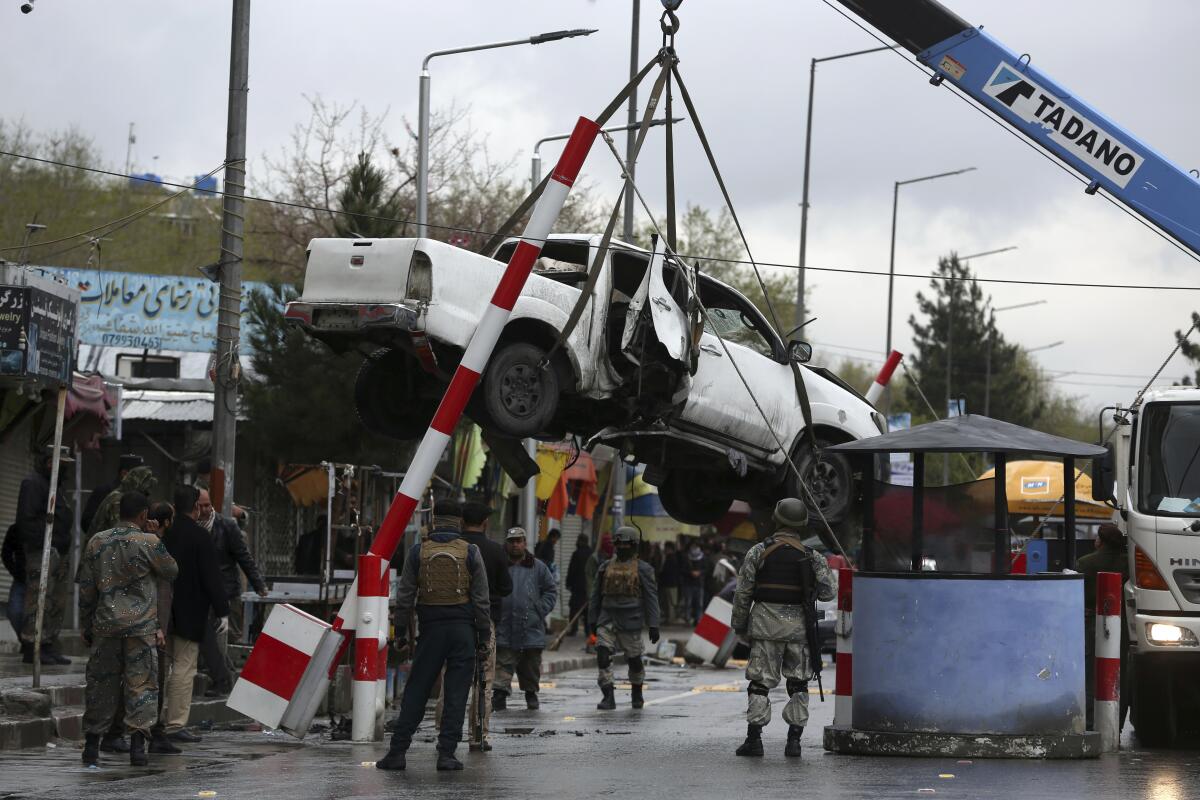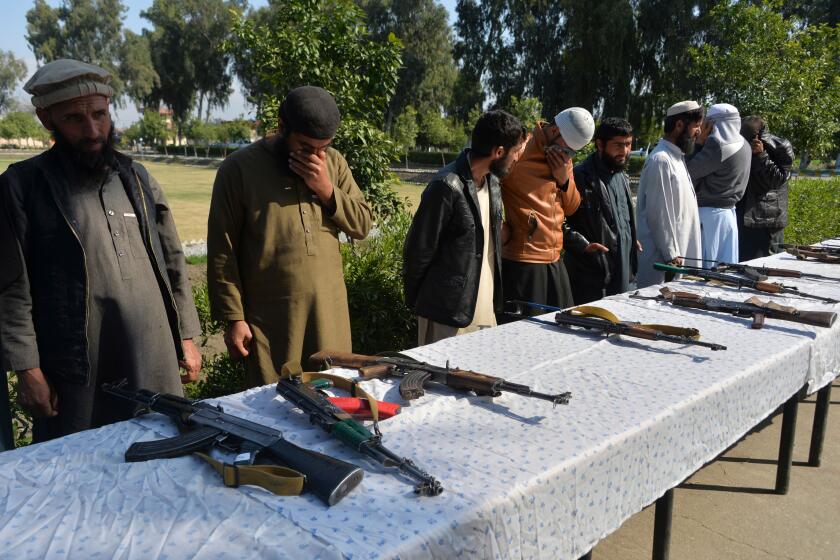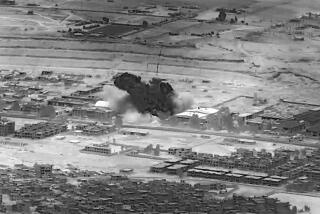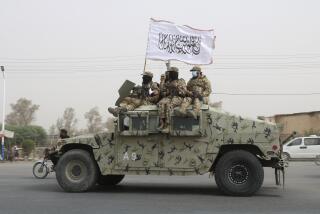U.S. isn’t releasing data on Taliban attacks, watchdog group says

- Share via
KABUL, Afghanistan — The U.S. mission in Afghanistan has for the first time refused to publicly release its data on insurgent attacks amid the implementation of a peace agreement between the United States and the Taliban, an American watchdog said Friday.
The decision not to release the data comes as the Trump administration is eager for the U.S.-Taliban agreement to be seen as successful so that President Trump can meet his commitments on pulling troops out of Afghanistan.
Washington’s Special Inspector General for Afghanistan Reconstruction, or SIGAR, which monitors billions of dollars in U.S. aid to Afghanistan, expressed its concern in its quarterly report, which also discusses the reduction in ground operations of Afghan forces.
John F. Sopko, who heads the watchdog, wrote that data on the Taliban and other militant attacks were “one of the last remaining metrics SIGAR was able to use to report publicly on the security situation in Afghanistan.”
The report said U.S. forces have classified all casualty information from Afghan national defense and security forces for the first quarter of 2020. However, the office of Afghanistan’s national security advisor this week said the Taliban have carried out 2,804 attacks since the peace agreement between the Taliban and U.S. was signed on Feb. 29.
On Saturday, the U.S. and the Taliban signed a landmark deal calling for all U.S. troops to withdraw from the war-torn country within 14 months.
Army Lt. Col. Thomas Campbell, a Pentagon spokesperson, said data on insurgent attacks were important to discussions between agencies regarding the Taliban’s adherence to the peace agreement
“It will be releasable to the public when no longer integral to these deliberations, or the deliberations are concluded,” he said.
Campbell did say that enemy-initiated attacks during the month of March exceeded seasonal norms.
“The U.S., NATO and our international partners have been clear that the Taliban’s level of violence against the Afghan National Defense and Security Forces is unacceptably high,” he said.
U.S. officials and the Afghan government have repeatedly urged the Taliban to reduce attacks in the wake of the agreement, but the insurgent group has continued to target Afghan security outposts at “levels above the seasonal norms,” according to the report.
Afghan officials said a police security chief in southern Helmand province and two other police officials were killed Wednesday, when a roadside bomb placed by the Taliban struck their car. According to Afghan Defense Ministry officials, the Taliban has been conducting on average 10 to 15 armed attacks daily on Afghan security forces across the country.
The watchdog report said Afghan special forces conducted 528 ground operations in the first three months of this year, 10% fewer than last quarter and 36% fewer than in the same period last year. Based on U.S. reporting to SIGAR, the Afghan forces conducted over half of the operations during this period independently of their American and NATO allies.
New light is being shed on efforts to locate Mark Frerichs, a 57-year-old American military contractor who was kidnapped in Afghanistan.
Under the peace deal, the U.S. last month began to draw down its forces to 8,600 from 13,000, with the remainder withdrawing in 14 months.
After the U.S.-Taliban deal, the Afghan government announced a 21-member team to negotiate peace with the Taliban in what are supposed to be intra-Afghan negotiations. However, the Taliban has refused to meet with a Kabul government team because of the continued dispute between Afghan President Ashraf Ghani and his political rival Abdullah Abdullah, who have both declared themselves the victor in September’s presidential election.
Another element of the U.S.-Taliban deal is a prisoner exchange. The agreement had called for the release of 5,000 Taliban prisoners and 1,000 government personnel held by the insurgents.
So far, the Afghan government has released 550 detainees based on age, vulnerability to the coronavirus and time served behind bars. The Taliban has not said if those released are among the prisoners referred to in the agreement. For its part, the Taliban has freed 60 prisoners.
Even though violence and attacks have continued in Afghanistan, the U.N. mission on Monday noted a drop in the number of civilians killed in the first three months of this year, compared with the same time last year. It said that in the first quarter of this year, 533 people, including 152 children, were killed by fighting and hundreds more were wounded.
More to Read
Sign up for Essential California
The most important California stories and recommendations in your inbox every morning.
You may occasionally receive promotional content from the Los Angeles Times.















